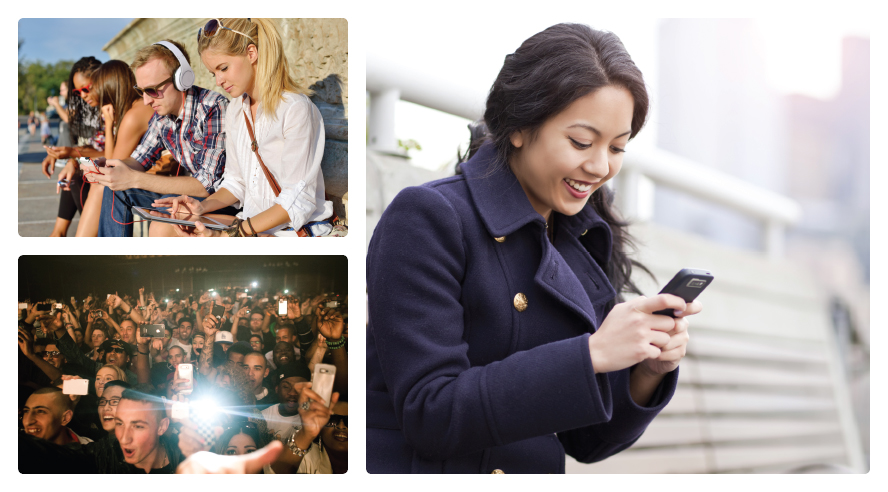Types of Mediated Communication
The phrase mediated communication may make you think about “the media”—that is, online news and entertainment sites, video games, television channels, movies, radio stations, newspapers, and magazines. These are examples of mass media: mediated communication vehicles that involve the sending of messages from content creators to huge, relatively anonymous audiences (Chaffee & Metzger, 2001). The content in such media is created for public consumption and is mostly one-directional; that is, you don’t directly interact with anyone by reading or watching this content.
USING MEDIATED COMMUNICATION

Although mass media are an important area of research for communication scholars, this chapter focuses on social media, which enable communicators to directly send and receive messages in real time or across time intervals. Increasingly, people use media devices—such as mobile phones and computers—to manage their relationships, communicate in school and work groups, and deliver presentations. At work, for instance, most interactions take place over e-mail, texts, or phone calls. Many businesses use Skype (or other videoconferencing systems) to conduct employment interviews. Daily communication with friends, family, and romantic partners happens through social media—dropping parents a quick “Hi” by text message or catching up with friends through Facebook or video chat. As a student, you might participate in online discussion groups and make on-line presentations for classes. For an overview of the differences between mass media and social media, see Table 3.1.